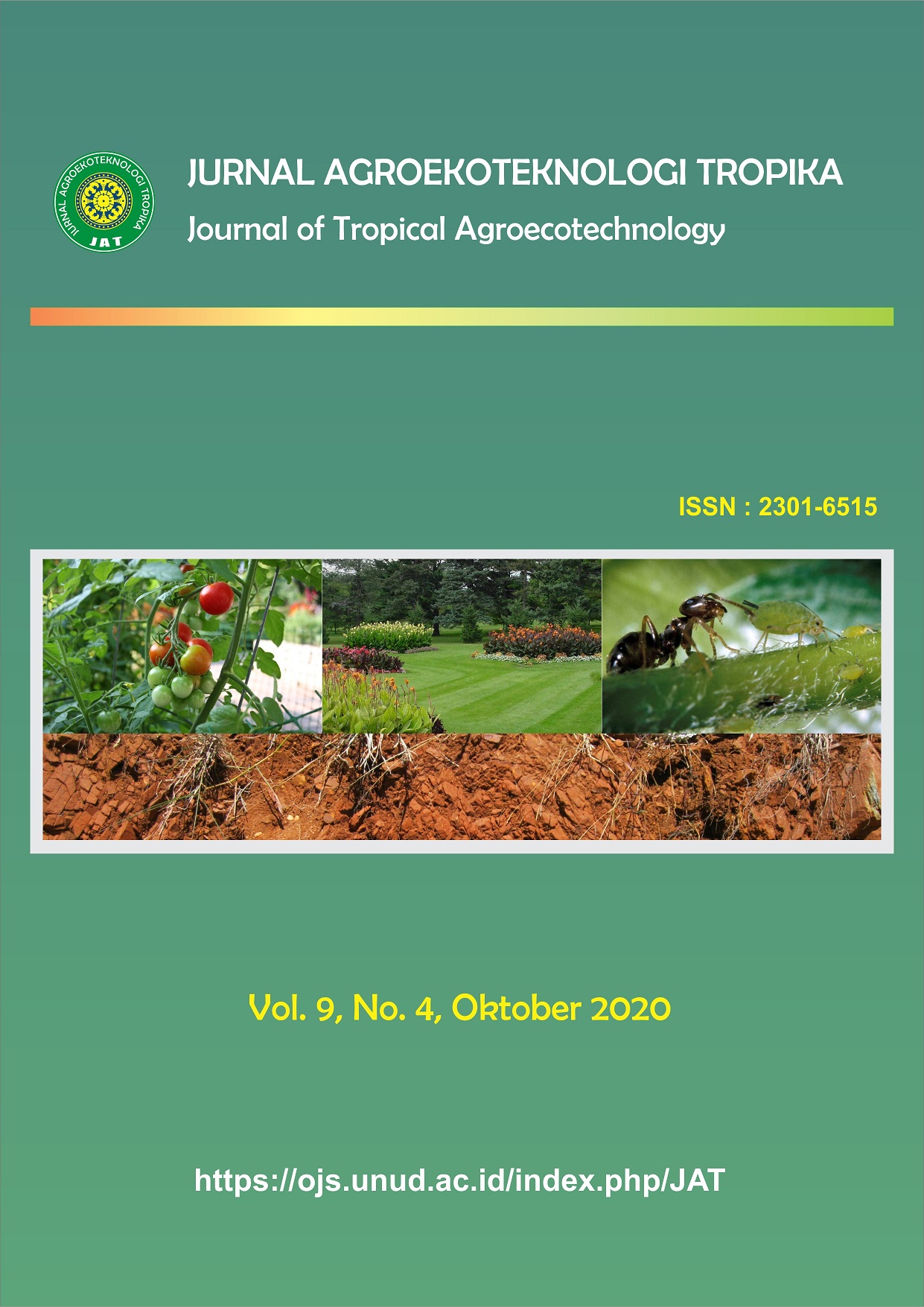Pengaruh Jarak Tanam dan Mulsa Jerami Padi terhadap Pertumbuhan dan Hasil Tanaman Jagung (Zea mays L.)
Abstract
The Effect of Spacing and Mulching of Rice Straw on Growth and Yield of Corn (Zea mays L.)
Corn is the second staple food after rice in Indonesia. Corn as an energy source has advantages compared to other feed ingredients. This research aims to determine the effect of spacing and mulching of rice straw on the growth and yield of corn. This study used a randomized block design (RAK) with the allocation of factorial treatment. The treatment used consisted of 2 factors. (J1) spacing of 50 cm x 50 cm, (J2) spacing of 75 cm x 25 cm, (M0) straw mulch 0 tons/ha, (M1) straw mulch 10 tons / ha, (M2) straw mulch 20 tons/ha. Combination treatments obtained 6 treatments namely; M0 J1, M0 J2, M1 J1, M1 J2, M2 J1 and M2 J2. Each combination treatment was repeated 4 times, so there were 24 study plots. The treatment of spacing significantly affected the weight of dry seeds/m2, very significant on the number of fobs/m2, LAI (Leaf Area Index), fresh weed weight/m2 aged 8 and 12 mst. The spacing of 75 cm x 25 cm resulted in the weight of dry seeds/m2, which was 1.04 kg, which was 20% higher than the spacing of 50 cm x 50 cm 0.83 kg. Rice straw mulch treatment had a significant to very significant effect on the observed variables except 10 mst soil water content, leaf/plant chlorophyll content, number of cobs/m2, and ear diameter. Giving rice straw mulch 20 tons/ha resulted in dry seed weight/m2, which was 1.07 kg 33% higher than without mulch 0.72 kg. The interaction of plant spacing with rice straw mulch has a significant effect on LAI and is very significant on the weight of fresh weed/m2 ages 8 and 12 mst. The interaction of 50 cm x 50 cm spacing with 20 tons/ha rice straw mulch obtained the best results but was not significantly different from the treatment of 75 cm x 25 cm with 20 tons/ha of rice straw mulch.



